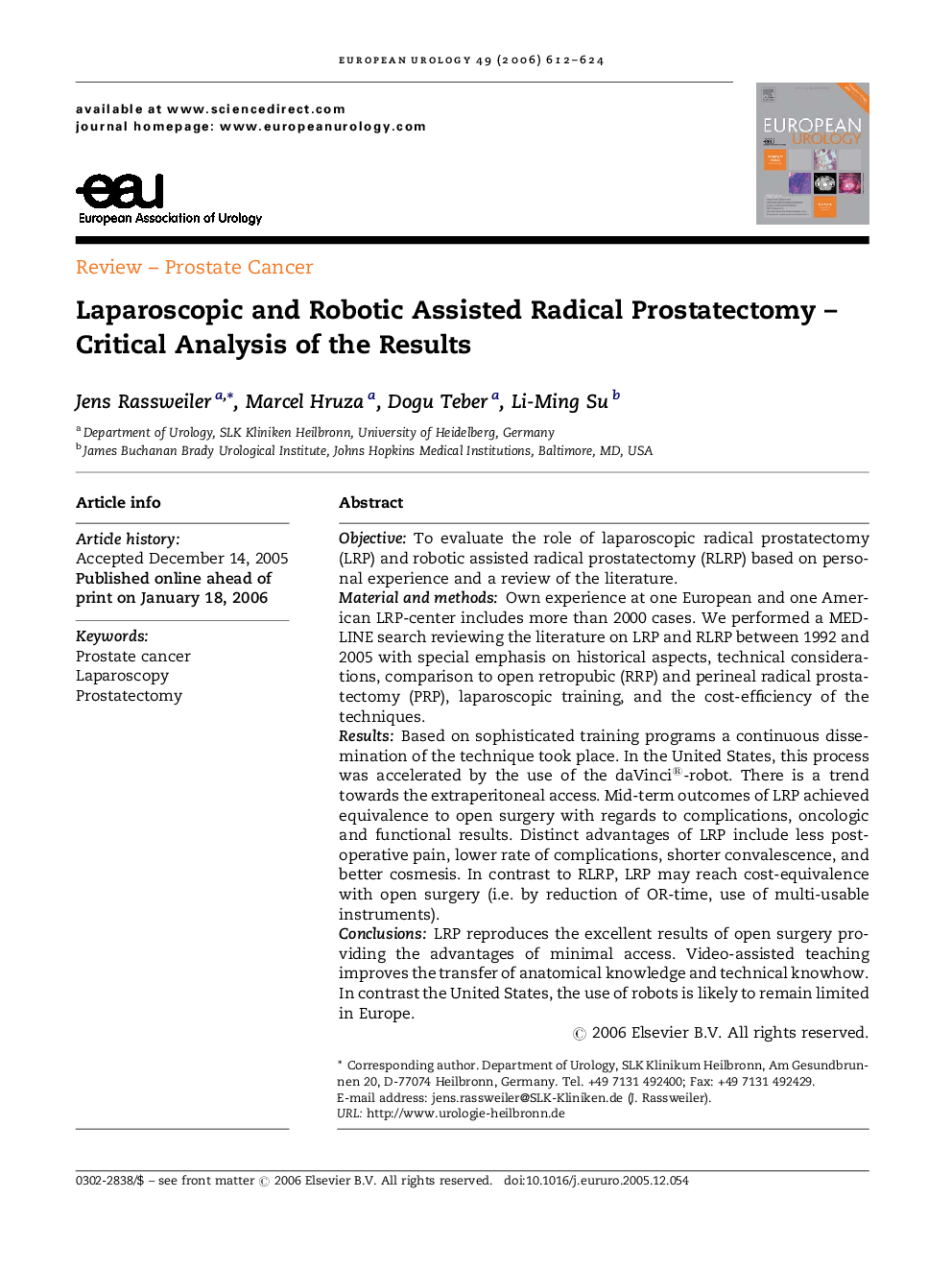| Article ID | Journal | Published Year | Pages | File Type |
|---|---|---|---|---|
| 3926420 | European Urology | 2006 | 13 Pages |
ObjectiveTo evaluate the role of laparoscopic radical prostatectomy (LRP) and robotic assisted radical prostatectomy (RLRP) based on personal experience and a review of the literature.Material and methodsOwn experience at one European and one American LRP-center includes more than 2000 cases. We performed a MEDLINE search reviewing the literature on LRP and RLRP between 1992 and 2005 with special emphasis on historical aspects, technical considerations, comparison to open retropubic (RRP) and perineal radical prostatectomy (PRP), laparoscopic training, and the cost-efficiency of the techniques.ResultsBased on sophisticated training programs a continuous dissemination of the technique took place. In the United States, this process was accelerated by the use of the daVinci®-robot. There is a trend towards the extraperitoneal access. Mid-term outcomes of LRP achieved equivalence to open surgery with regards to complications, oncologic and functional results. Distinct advantages of LRP include less postoperative pain, lower rate of complications, shorter convalescence, and better cosmesis. In contrast to RLRP, LRP may reach cost-equivalence with open surgery (i.e. by reduction of OR-time, use of multi-usable instruments).ConclusionsLRP reproduces the excellent results of open surgery providing the advantages of minimal access. Video-assisted teaching improves the transfer of anatomical knowledge and technical knowhow. In contrast the United States, the use of robots is likely to remain limited in Europe.
